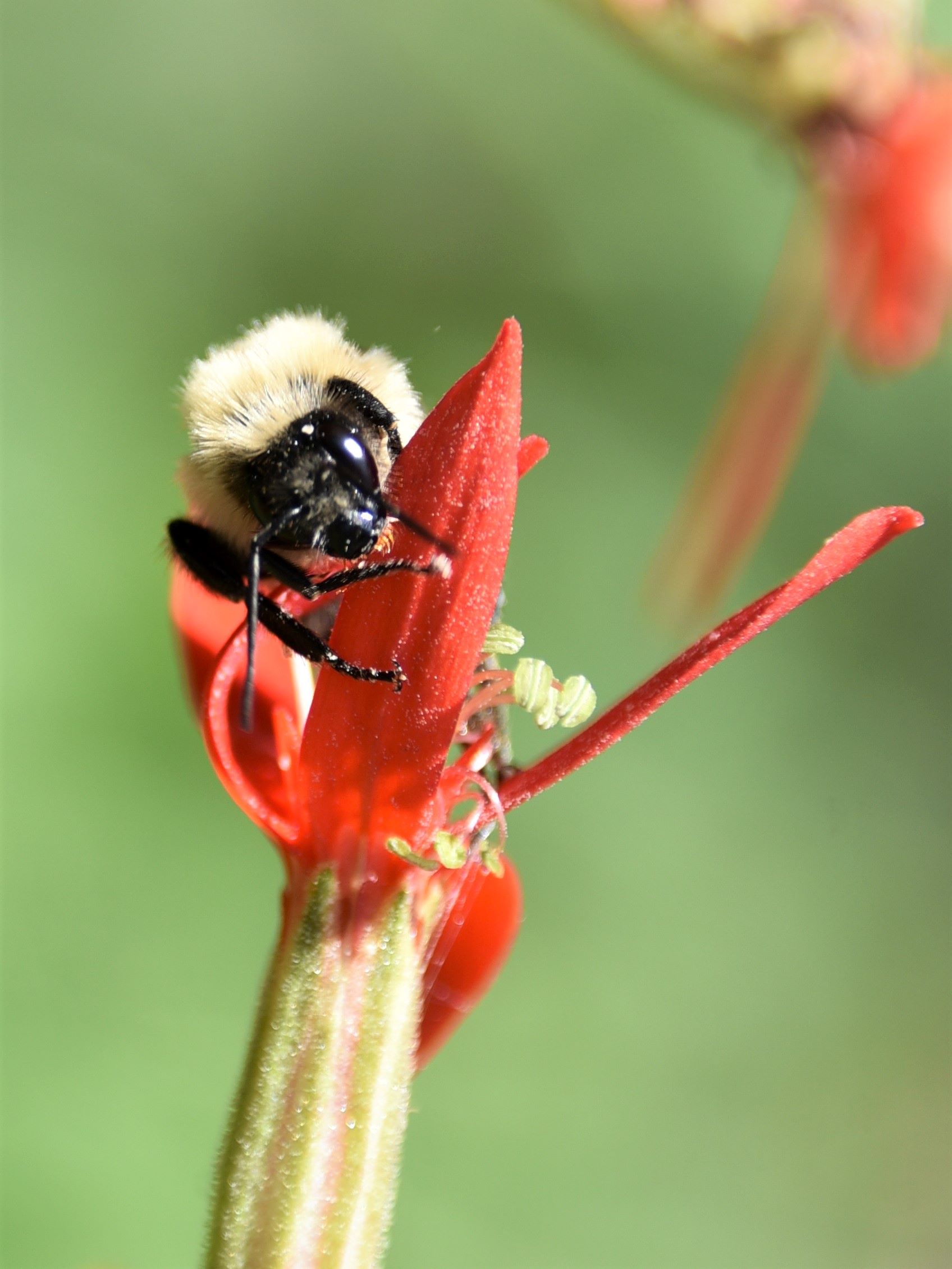
by Kate Redmond
Bug o’the Week And Now for Something a Little Different XV Royal Catchfly
Greetings, BugFans,
The BugLady had a long overdue “Oh Duh!!!”moment recently when BugFan Freda asked her if she realized why Royal Catchfly flowers were named Catchfly. Nope – hadn’t thought about it (insufficient scholarship).
Freda had just discovered, to her horror, that she might be aiding and abetting pollinator murder. Did the BugLady know that the Royal Catchfly was, in fact, a pollinator deathtrap? She had planted a small patch of native wildflowers in order to attract pollinators, and while she was admiring the Catchfly’s beautiful red flowers, she noticed a dead bumblebee. She took a closer look and saw a dead honeybee, one very much alive honeybee that was completely stuck and was trying to pull free from the sticky plant, and a small leafcutter bee that was in the same predicament (and when she gently pried a bee out of the glue, it remained so sticky that it couldn’t fly). There were at least two dead, and two dying bees in her pollinator patch.
Thanks, Freda, for the question (and for most of the pictures).
First off, what’s a Royal Catchfly? It’s a brilliantly red, native wildflower in the Pink/Carnation family Caryophyllaceae and in the large genus Silene. Silene is a complicated genus, and various aspects including its genetics, speciation, and the complicated reproductive strategies of some species have been studied for a long time. Varieties of Silene are planted in perennial gardens and sold by florists, and some, like the non-native Bladder campion (Silene vulgaris) are eaten https://www.minnesotawildflowers.info/flower/bladder-campion.

Royal catchfly is historically a plant of prairies, savannahs, woodland openings, roadside edges, and railroad rights-of-way, and today it’s considered widespread, but patchily distributed. Over much of its range, which lies from Kansas and Oklahoma to Ohio, down to northern Florida, it’s considered to be Rare, Endangered or Threatened, and it’s been extirpated (driven locally extinct) from a few states due to habitat loss, invasive plant thuggery, shade, lack of fires, and humans with shovels.
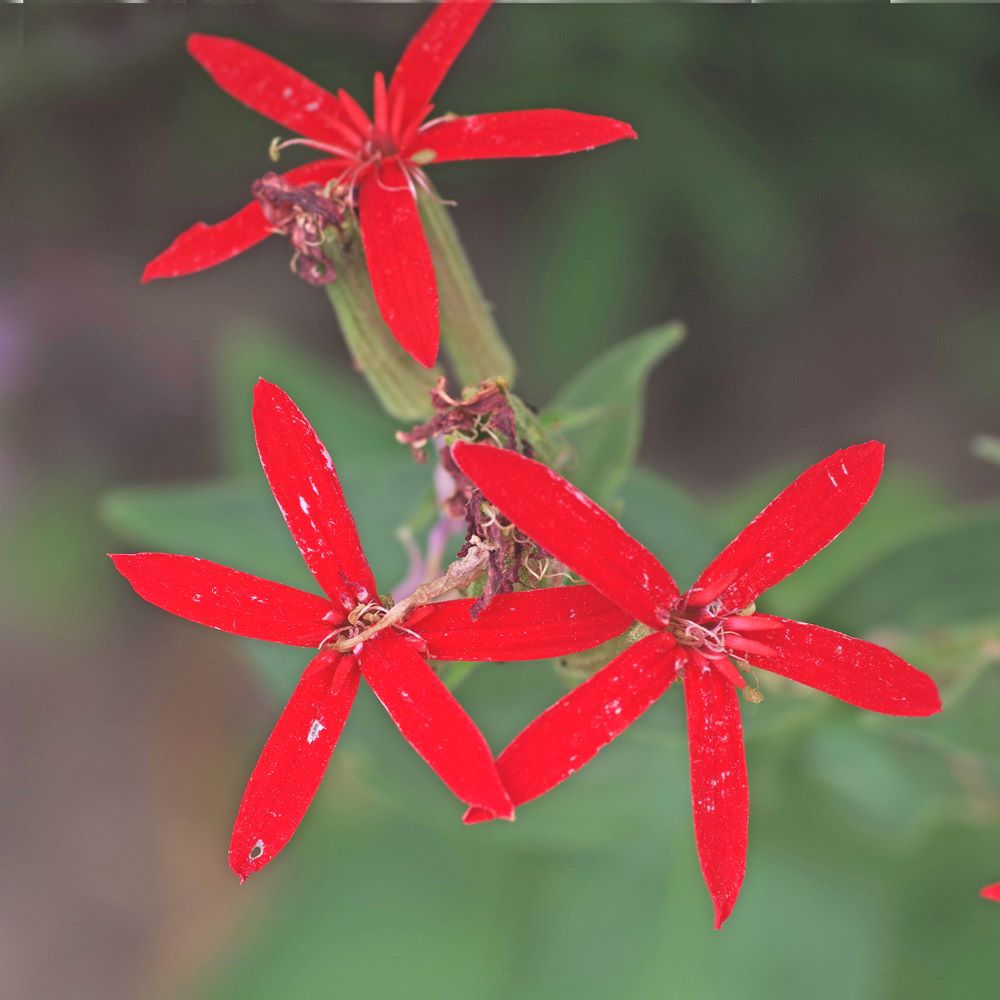
Royal catchfly (Silene regia), and a number of other Silene species, are called “catchfly” because they catch flies. They are adorned with sticky, gluey hairs (glandular trichomes) on the calyx (the green “vase” that’s formed by the sepals at the base of the flower) and on the upper stems. The calyxes of older flowers that have shed their petals are a bit tacky, but not actively gluey like the younger flowers, and the leaves are fuzzy but not sticky.
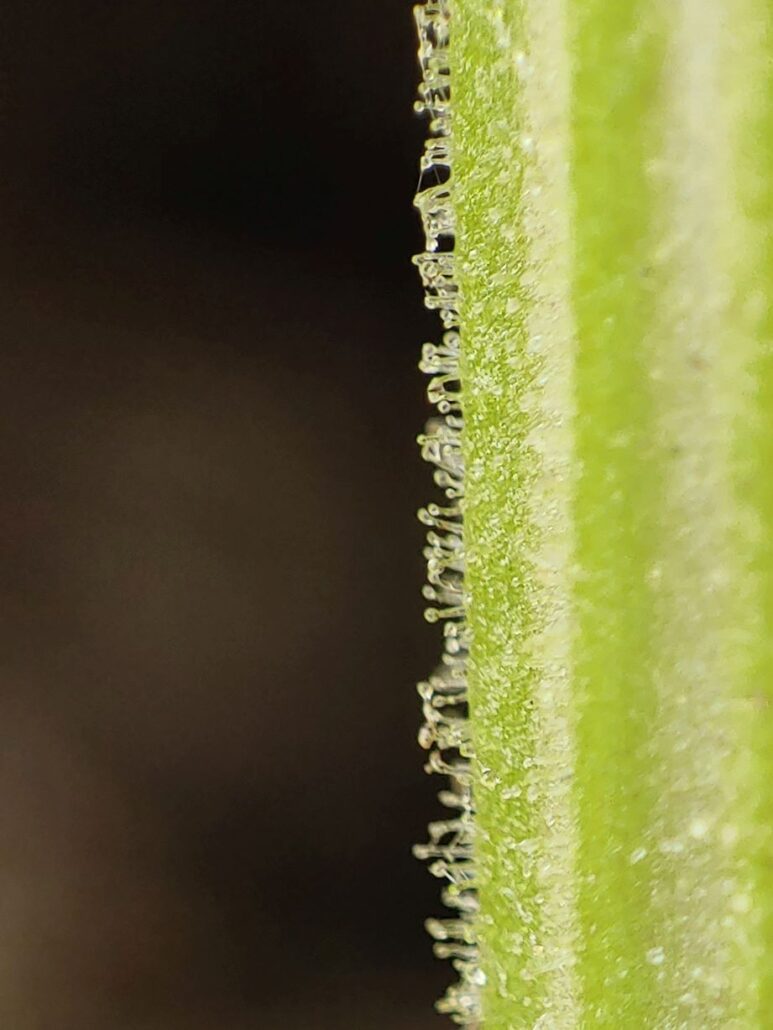
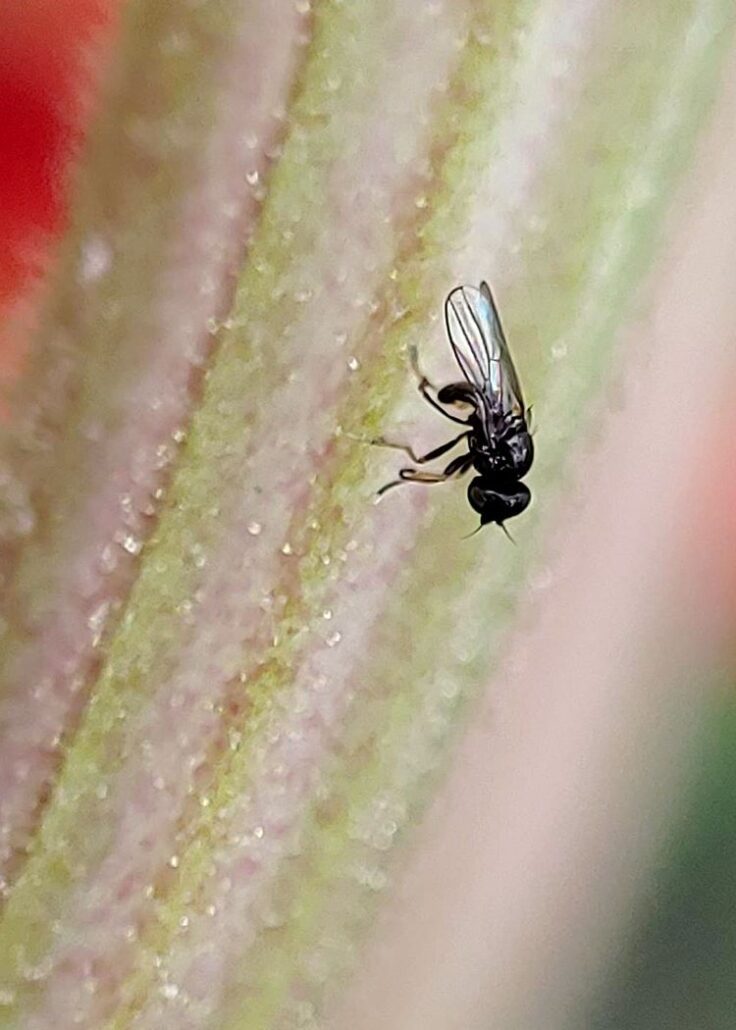
The sticky hairs (and some stiff, downward-pointing hairs toward the bottom of the plant) are very effective in stopping insects that might try to climb up the stem toward the flower (though one author had seen some aphids and their guardian ants navigating the stems). They’re equally effective in deterring “nectar robbers” – insects like bumble bees whose tongues aren’t long enough to reach the nectar prize from the top of the flower, so they chew their way through the calyx from the side, sip the nectar, and don’t do any pollinating at all. One author says that the plant is “selecting for” airborne pollinators,” the chief of which is the Ruby-throated hummingbird, though moths with long proboscises that hover in front of the tubular flower could get away with it, as can swallowtail butterflies. Insects can’t see the color red (hummingbirds can), and apparently, although many insects can see ultra-violet light, a UV image of Royal catchfly doesn’t reveal any insect “come hither” signals.
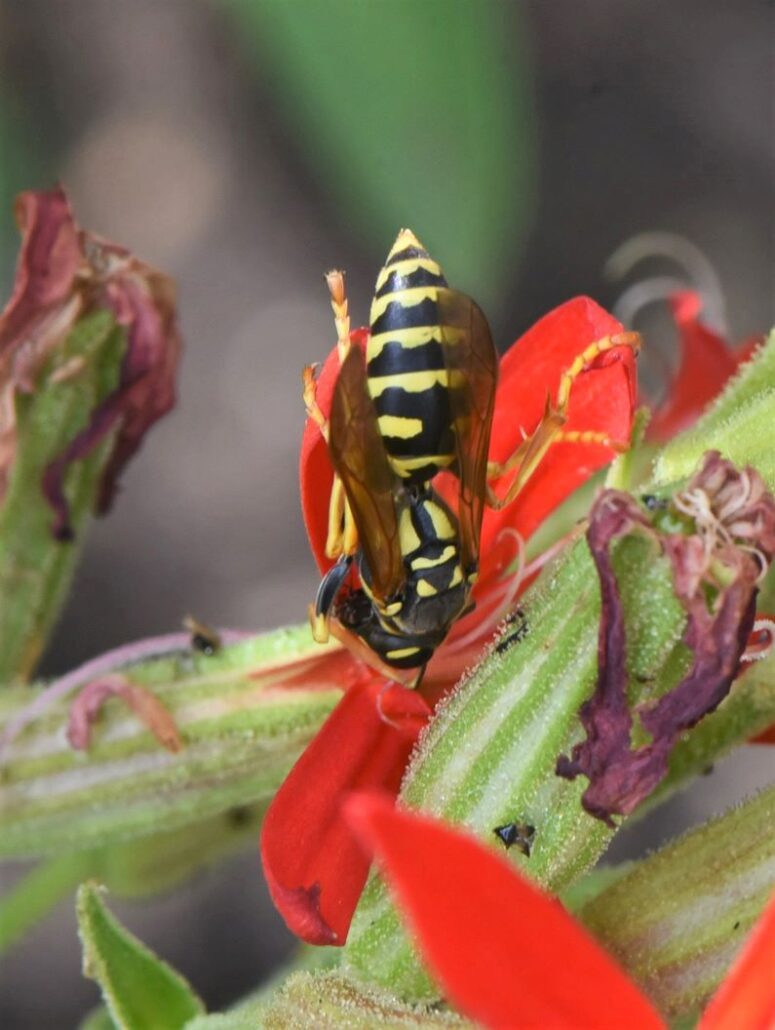
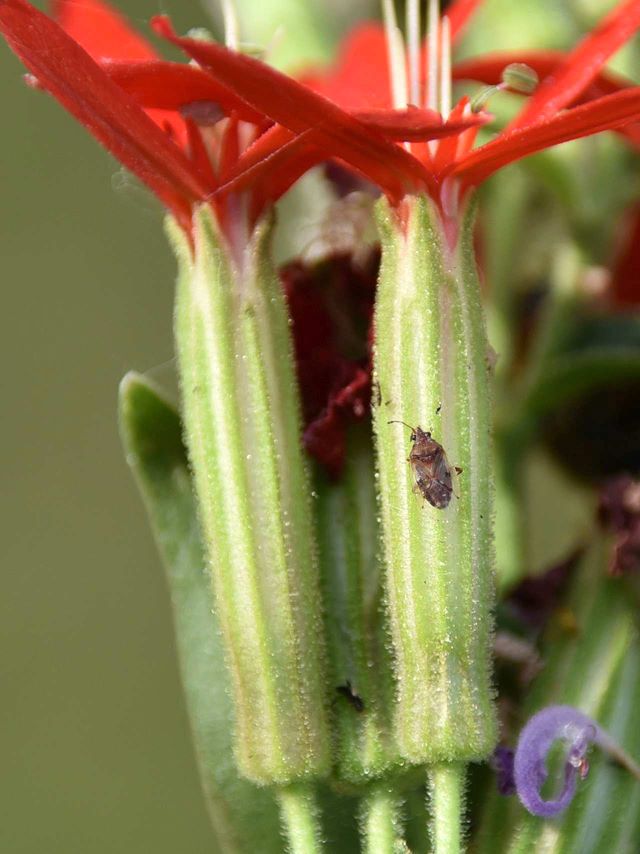
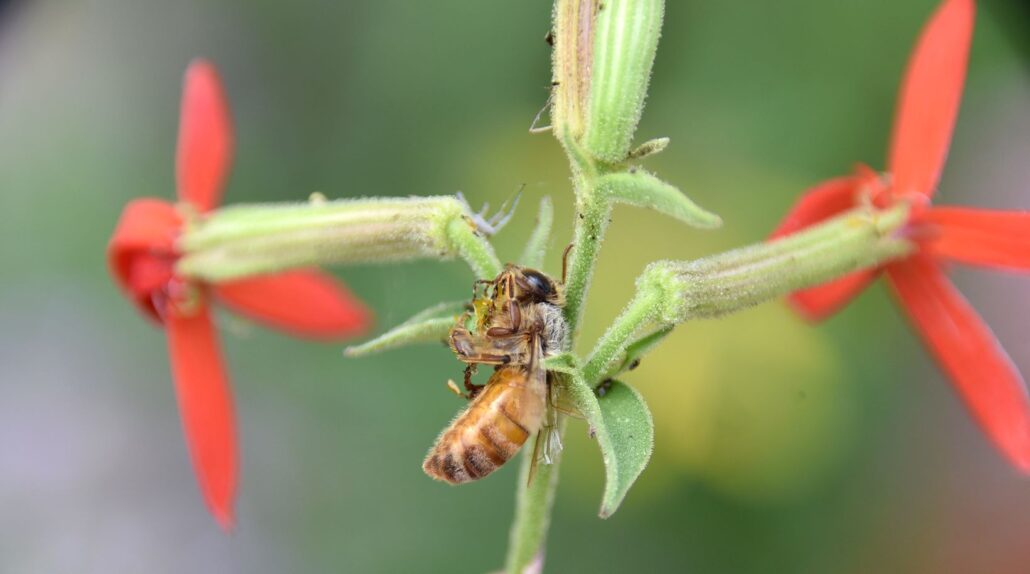
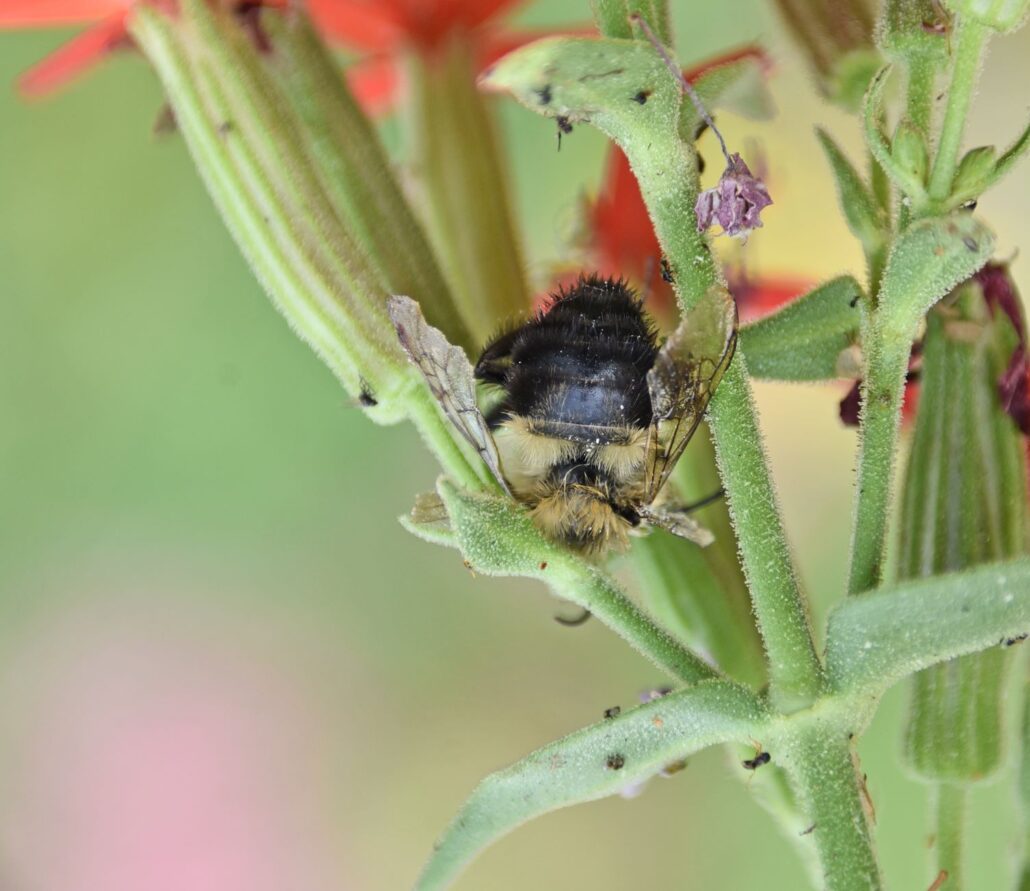
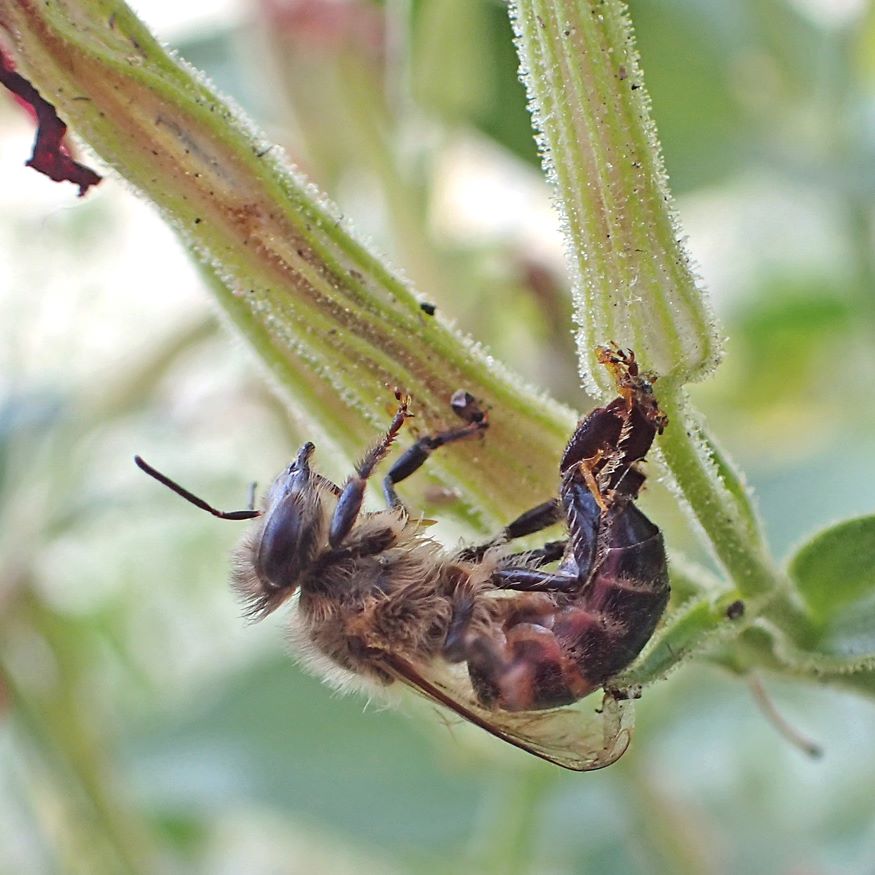
What happens after the bugs get caught?
The logical leap is that having gone through the effort of catching them (producing the hairs requires an energy investment from the plant, after all) the catchfly uses them. Some sources speculated that this kind of insect entrapment might be a step toward an eventual life of carnivory and wondered if the catchfly had any way to absorb the nutrients in its victims, like a sundew does. In his Master’s Thesis in 2017, Garrett John Dienno held up two yardsticks to measure the Royal catchfly’s possible carnivory: “1) whether S. regia actively attracts, captures, and retains prey, and/or secretes digestive enzymes to facilitate nutrient absorption; and (2) whether it absorbs and translocates the resultant nutrients.” Spoiler alert – No and No. There is no insect-attracting nectar and no UV signal, and the glandular hairs do not secrete any digestive enzymes. He concluded that “Instead, we propose the glandular trichomes on the S. regia calyx provide a passive defensive benefit to the flowers and seeds by protecting the very structures that are supporting their development.”
The published word on the catchflies is a bit murky, though, and there’s some just plain bad information out there. One otherwise respectable plant nursery noted that Royal catchfly comes from a carnivorous family (possibly the same nursery that once claimed that Cup Plant (https://www.illinoiswildflowers.info/prairie/plantx/cupplantx.htm) digests the insects that drown in the water pools formed by their perfoliate leaves). The Pink family Caryophyllaceae is not known for carnivory, but the Order it’s in, Caryophyllales (a much bigger umbrella) does include some families with carnivorous plants (it also contains cacti and beets). What a difference a few letters make!
A number of nursery catalogs and other publications state that because having small, rotting insects stuck to their stems would be unhealthy for Royal Catchflies, the plants get rid of the bodies by secreting enzymes that break them down before they “get putrid.” Self-preservation rather than nutrition. Way back in 1876, a Professor W. J. Beal wrote about a related plant that “We need not necessarily suppose that they are digested because they are captured by sticky plants.”
A gardening site’s description of the related and equally sticky Night-flowering catchfly, which is pollinated by moths, said that “When the moth touches the plant it finds that it cannot get away easily and so is more likely to get covered in pollen, or release any pollen it is already carrying, as it tries to break free. This it will do, because the plant is not insectivorous and is only interested in temporary prisoners rather than permanent ones.” So, happily, the plant’s intent is not to harm it.
One nursery suggested that the stuck bugs might provide a feast for insectivorous birds. The BugLady can picture the hummingbirds that come for nectar noticing the stuck insects and picking them off the plant (small insects are a regular part of their diets) but she can’t picture sparrows or chickadees doing that. It’s possible that long-legged insects like wasps and yellowjackets, which forage for protein for their larvae, might check the catchfly’s offerings.
The British are not immune to this silliness. Back in 2009, Scientists from the Royal Botanic Gardens, Kew and the Natural History Museum concluded that petunias, potatoes, and several other common plants were meat eaters – or at least on the way to being meat-eaters. Why? Because they have sticky hairs that trap bugs. After making a big splash on both sides of the Pond, they walked it back a bit. “However, some of the commonly accepted carnivores [like petunias] have not been demonstrated to have the ability to digest the insects they trap or to absorb the breakdown products.”
They went on to say “Professor Mark Chase, Keeper of the Jodrell Laboratory at the Royal Botanic Gardens, Kew says, ‘…. many commonly grown plants may turn out to be cryptic carnivores, at least by absorbing through their roots the breakdown products of the animals that they ensnare. We may be surrounded by many more murderous plants than we think.’” Nice save?
There’s a reason why scientists submit papers for peer review.
(The BugLady is reminded of Nathaniel Hawthorne’s short story “Rappaccini’s Daughter.”)
Kate Redmond, The BugLady
Bug of the Week archives:
http://uwm.edu/field-station/category/bug-of-the-week/
